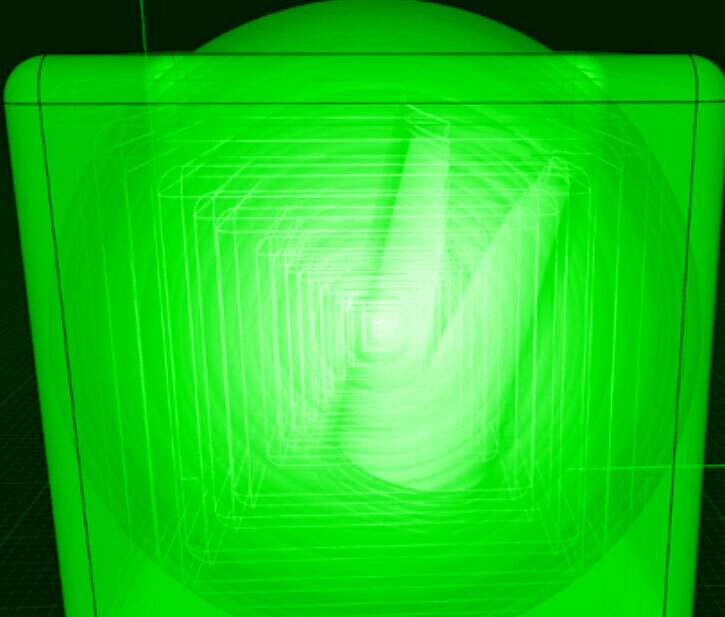Thoughts on the Binding Problem:
How Is the Worldsim Unitary?
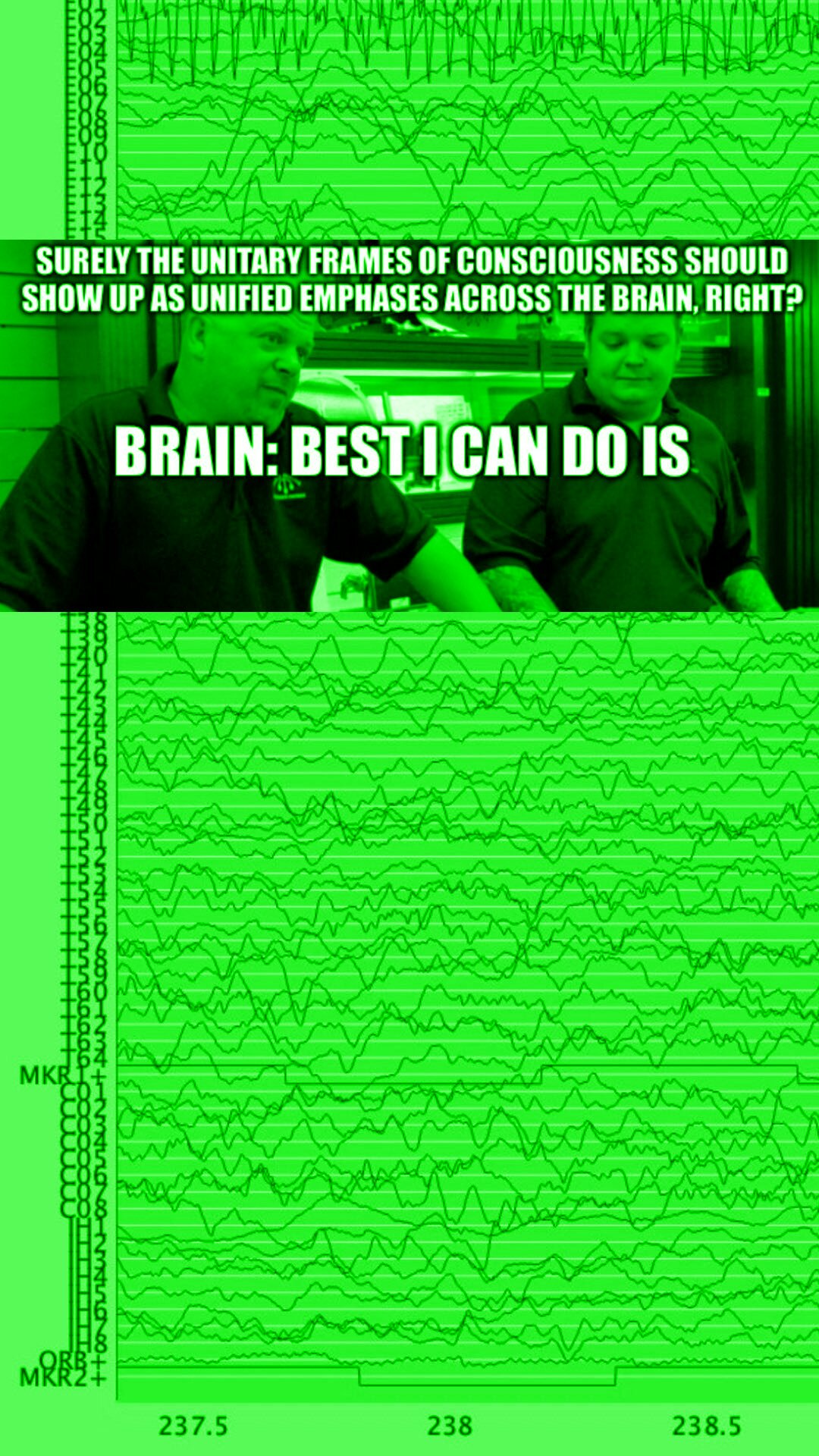
The binding problem is a problem you keep running into when exploring mechanisms for consciousness. In your experience, you hear a bird chirp once. But when you look in the brain, every region shows different timing and shapes of electrical crests.
What makes this more bizarre is that even though visual/auditory/somatic signals arrive with different lags, your conscious experience compensates — welds them — to have a single agreed time for every event, even when the event has both visual and somatic components. Experience shows no echoes or spread of timing of events — events feel singular. That’s the question: what is the orchestration process, and where in the brain can we see it?
The image below shows event-related potentials (ERPs) for somatic, auditory, and visual stimuli- the timing and shape are different.
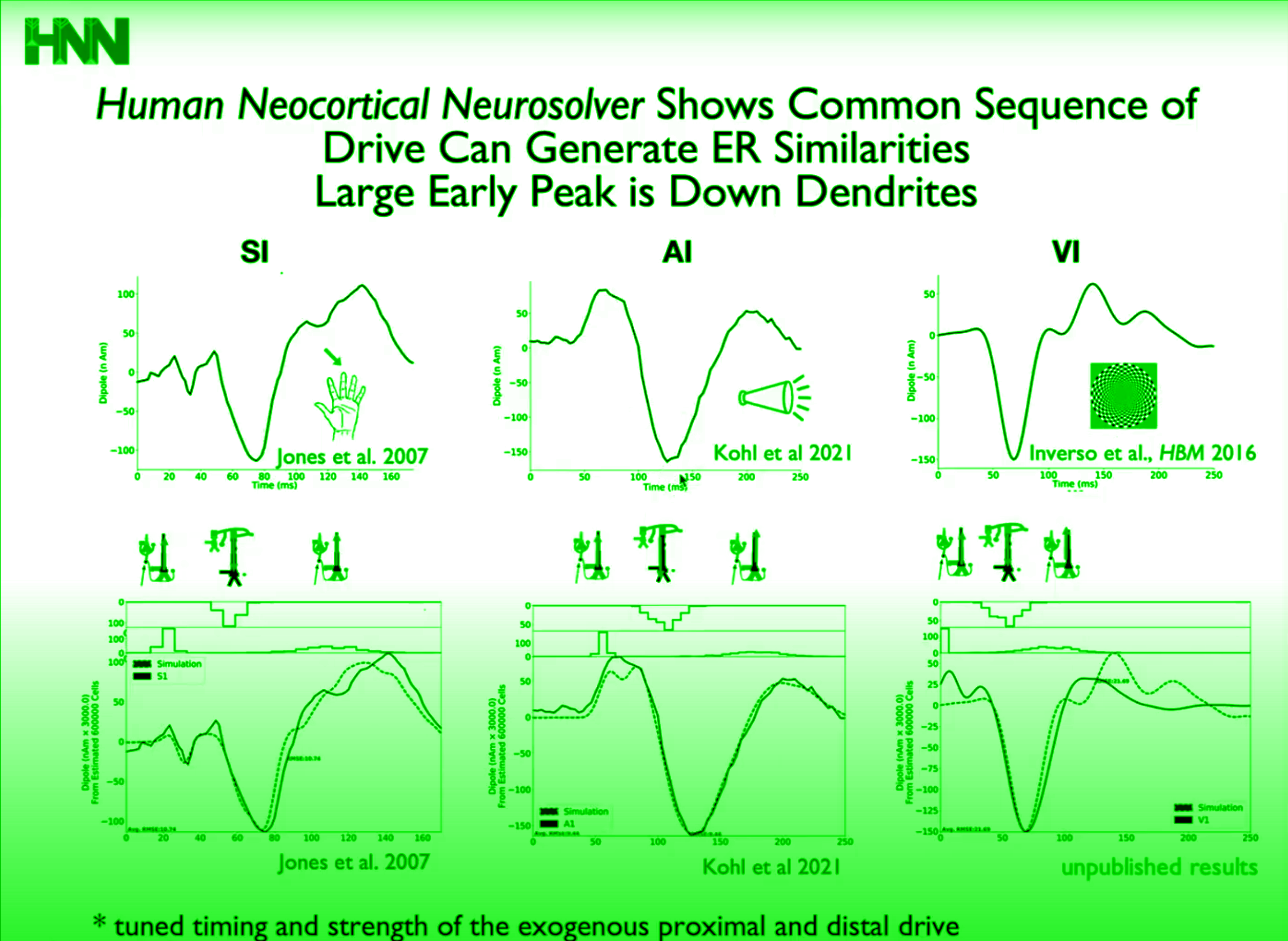
1. Anastomotic Processing (Warren McCulloch/IIT)?
 Warren McCulloch was a neuroscientist who proposed the idea of anastomotic processing—that the brain's main magic is not serial or parallel, but a third
kind of thing—a neural network style mixing. If you imagine a net with three layers, input to each node on the bottom layer gets broadcast with differing
weights to the middle layer, and so on. In this way, you can extract invariant patterns in the input, and perhaps bind several inputs into a singular complex representation.
Maybe this is what Integrated Information Theory (IIT) is hinting at, that a unitary temporal stream arises by this criss-cross mixing. One might imagine that the coexistence of multiple operating timescales within the network helps forge a unified temporal stream—with ionotropic receptors generating sharp, millisecond bursts, and metabotropic receptors stretching that same signal into a slow, echoing persistence across seconds.
Warren McCulloch was a neuroscientist who proposed the idea of anastomotic processing—that the brain's main magic is not serial or parallel, but a third
kind of thing—a neural network style mixing. If you imagine a net with three layers, input to each node on the bottom layer gets broadcast with differing
weights to the middle layer, and so on. In this way, you can extract invariant patterns in the input, and perhaps bind several inputs into a singular complex representation.
Maybe this is what Integrated Information Theory (IIT) is hinting at, that a unitary temporal stream arises by this criss-cross mixing. One might imagine that the coexistence of multiple operating timescales within the network helps forge a unified temporal stream—with ionotropic receptors generating sharp, millisecond bursts, and metabotropic receptors stretching that same signal into a slow, echoing persistence across seconds.
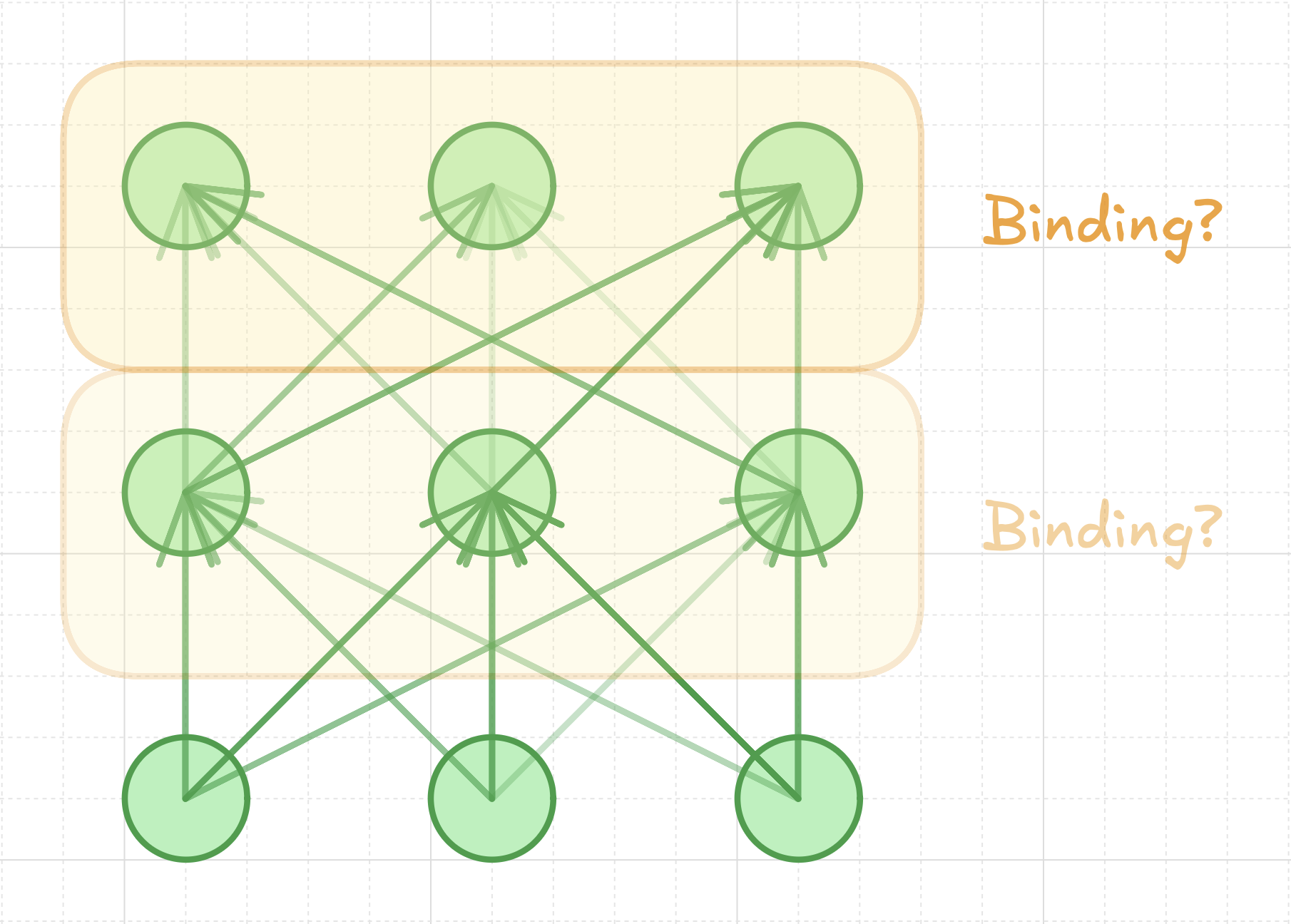
2. Matrix Cell or Other Clock (Rodolfo Llinás/GWT)?
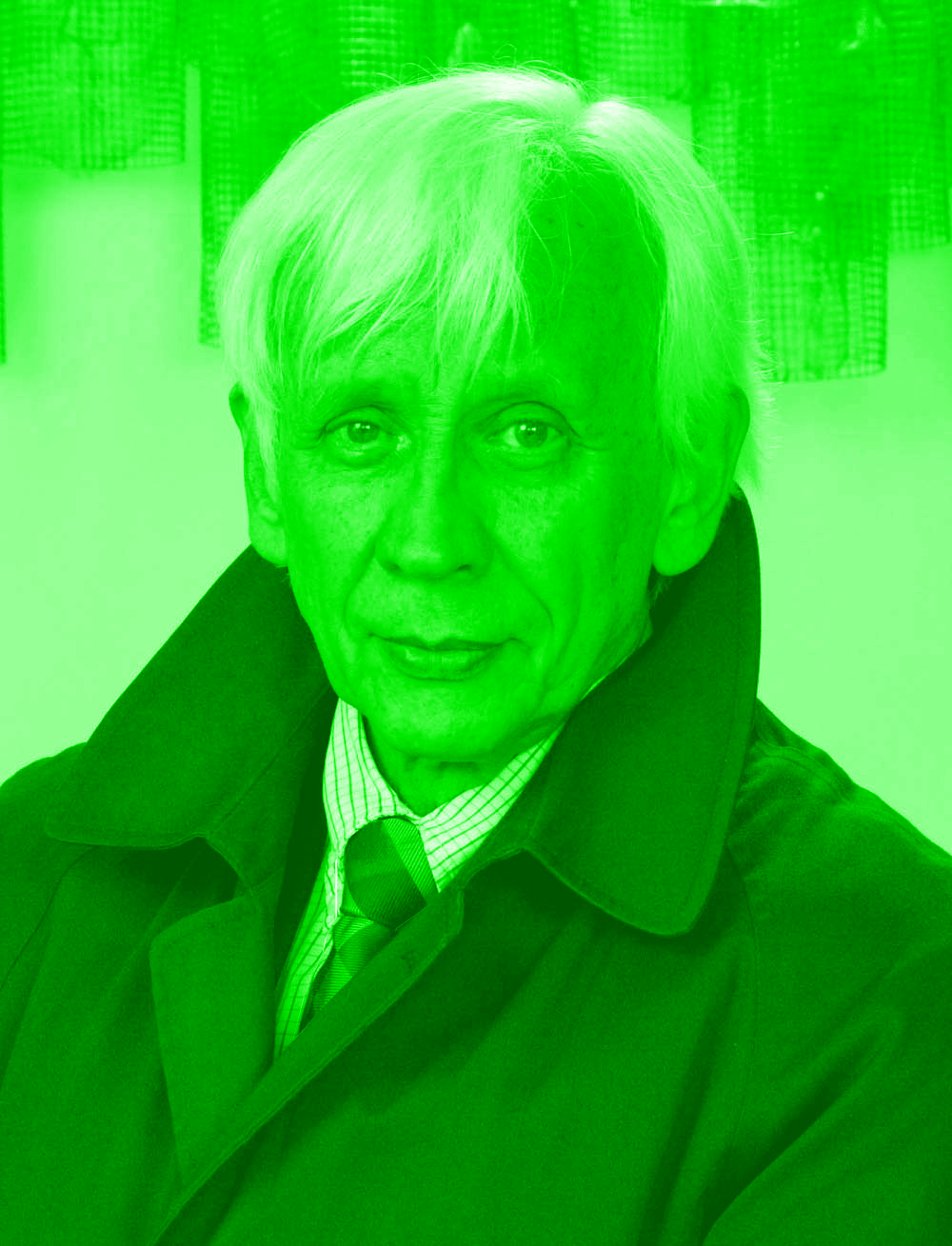 Llinás is another neuroscientist whose book, "I of the Vortex," proposes that the thalamus is key in overcoming the binding problem—to wit, that the
thalamus has two types of functions: (1) relaying sensory input, and (2) providing a global, binding, amodal 'clock' signal. Primary (LGN, MGN) and associational (Pulvinar) thalamus
would do function one; while intralaminar and other matrix cell regions, which broadcast roughly to the whole cortex, would provide the timing of frames of consciousness. Where two signals join
in time at cortex, this would dictate what is attended to from moment to moment. Bernard Baars' Global Workspace Theory (GWT) suggests frontal or attentional systems may serve as the
integrating clock. To Baars' point, mPFC (medial prefrontal cortex) does appear to show FM crest response to transients in music, etc. The graphic below demonstrates how matrix cells might clock the brain.
Llinás is another neuroscientist whose book, "I of the Vortex," proposes that the thalamus is key in overcoming the binding problem—to wit, that the
thalamus has two types of functions: (1) relaying sensory input, and (2) providing a global, binding, amodal 'clock' signal. Primary (LGN, MGN) and associational (Pulvinar) thalamus
would do function one; while intralaminar and other matrix cell regions, which broadcast roughly to the whole cortex, would provide the timing of frames of consciousness. Where two signals join
in time at cortex, this would dictate what is attended to from moment to moment. Bernard Baars' Global Workspace Theory (GWT) suggests frontal or attentional systems may serve as the
integrating clock. To Baars' point, mPFC (medial prefrontal cortex) does appear to show FM crest response to transients in music, etc. The graphic below demonstrates how matrix cells might clock the brain.
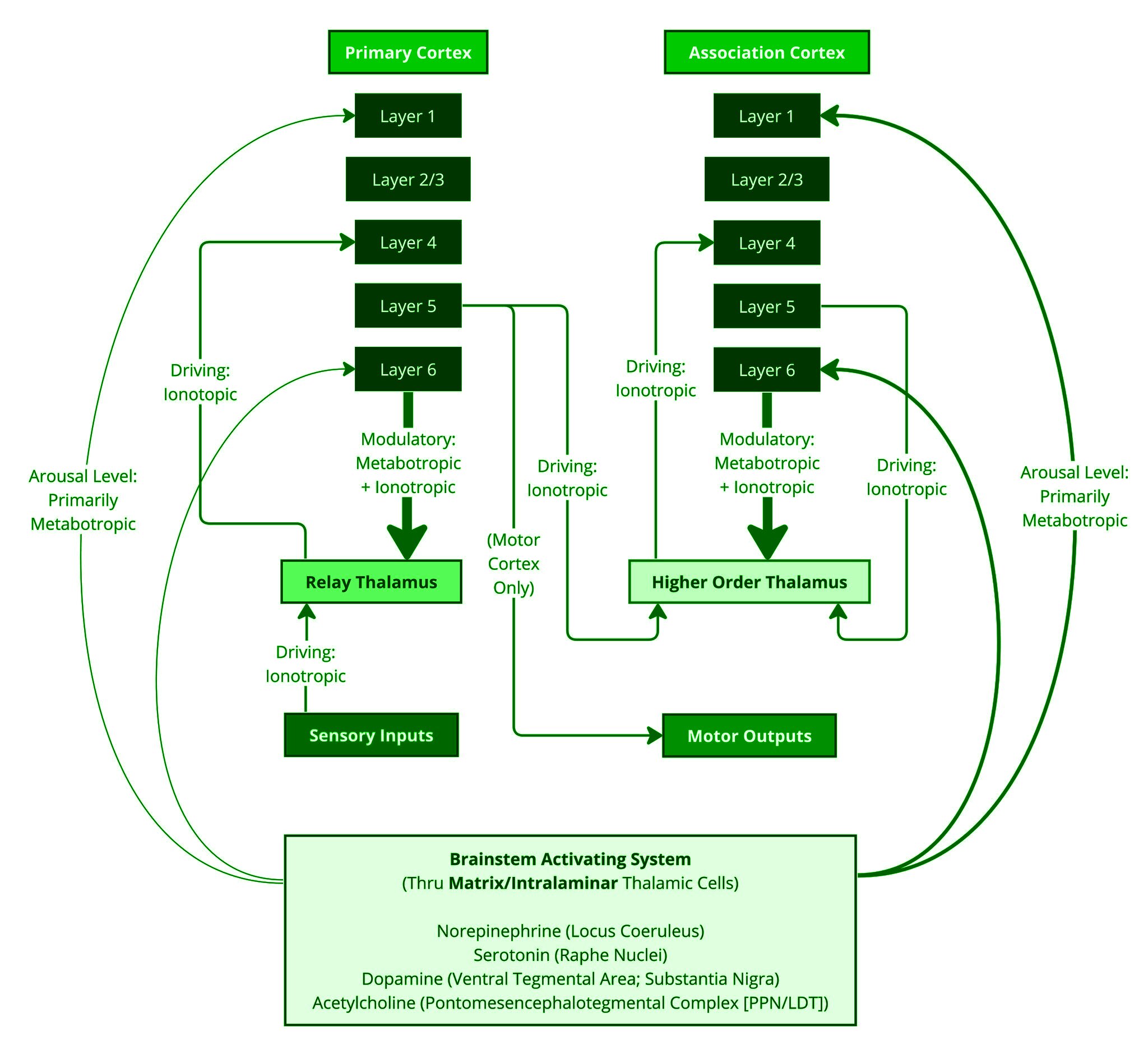
René Descartes was obsessed with consciousness needing a unitary seat (not lateralized to either hemisphere). He thought the pineal gland sounded good. However, people without a pineal gland appear moderately unaffected and certainly still conscious (nor does that gland show any reason to be performing such a task). At first glance, the cerebellum offers a better seat for making a unified body schema (see homunculi below), but again, people without a cerebellum appear to still retain felt (somatic) qualia and are able to learn to operate their body even without a cerebellum. But, the cerebellum does appear critical to have precisely timed and located frames of consciousness for allowing fast response times and precise motor control. The lower left image is taken from Steven Lehar's Cartoon Epistemology, and shows the *not-directly-observable* physical body (bones/muscle, left), the brain of which conjures the experiential body you're familiar with (pole body depiction, right). The experiential body is a kind of servo to drive the not-directly-observable physical body.
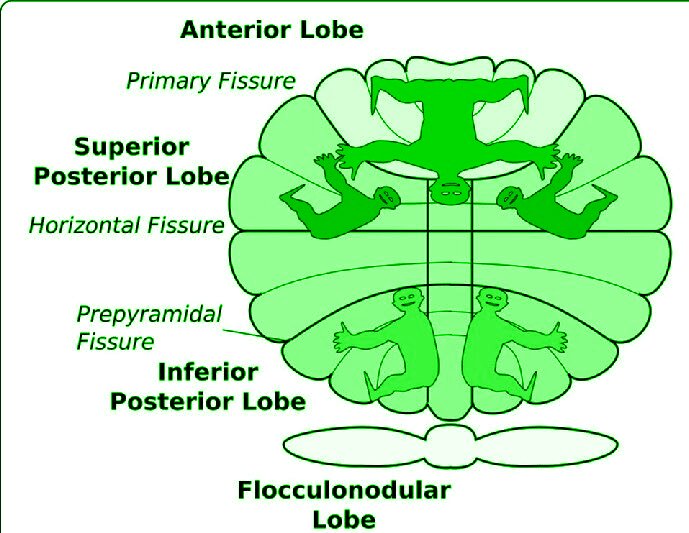
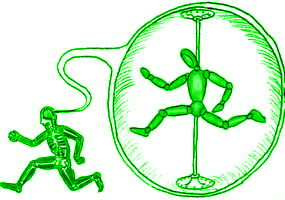
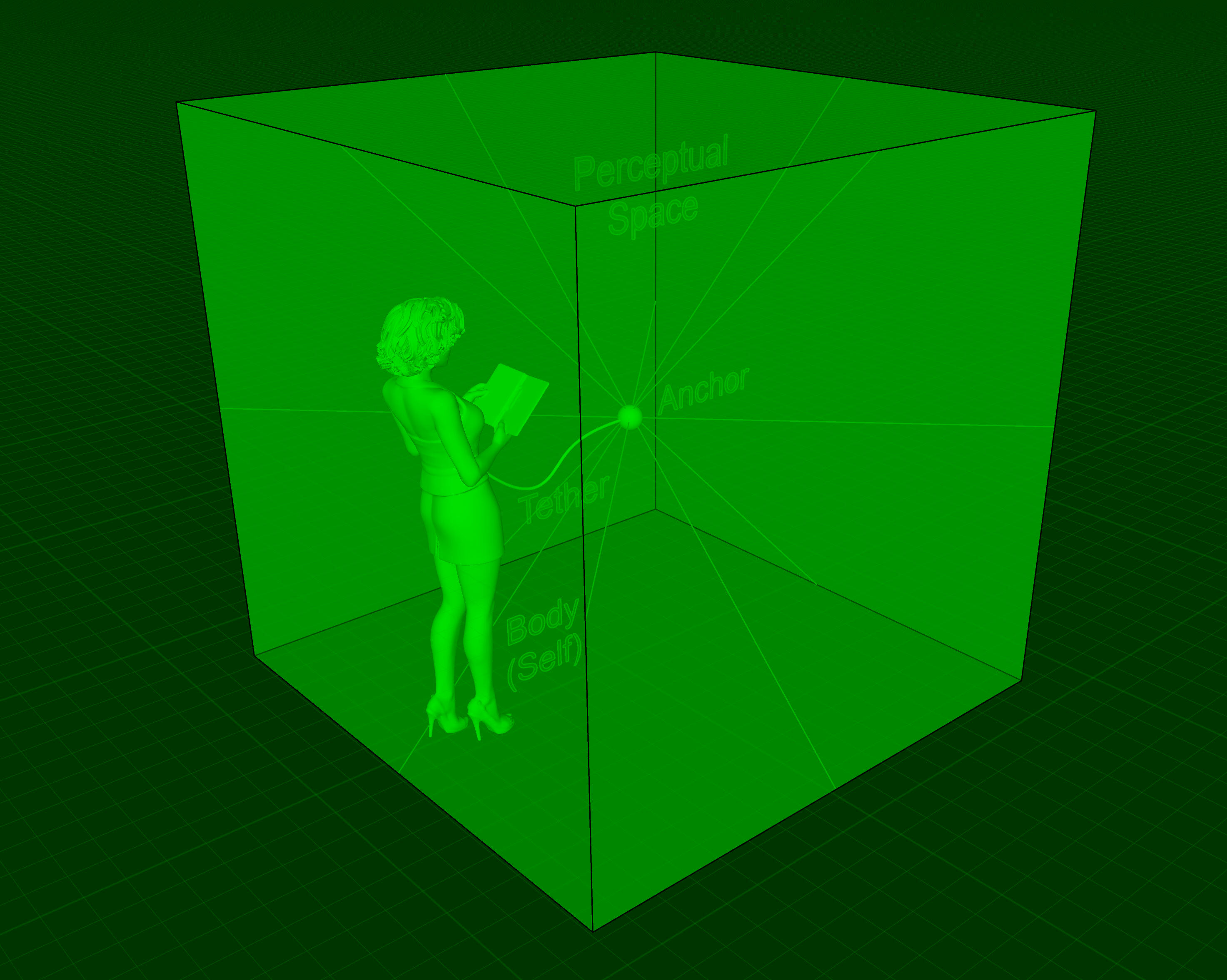
There are all kinds of loops in the brain. The best known is the thalamo-cortical loop (involving both specific and non-specific components). The trisynaptic circuit goes serially through the hippocampus. But there's another large loop connecting the cerebrum and cerebellum, depicted below. Outputs from cortex proceed to the pons and then to the cerebellum and back to the thalamus and cortex. The image below explores whether the cerebellum might contribute to the timing of the frames of consciousness, but as mentioned earlier, it is unlikely that the cerebellum is necessary for them, only that it helps with their precision.
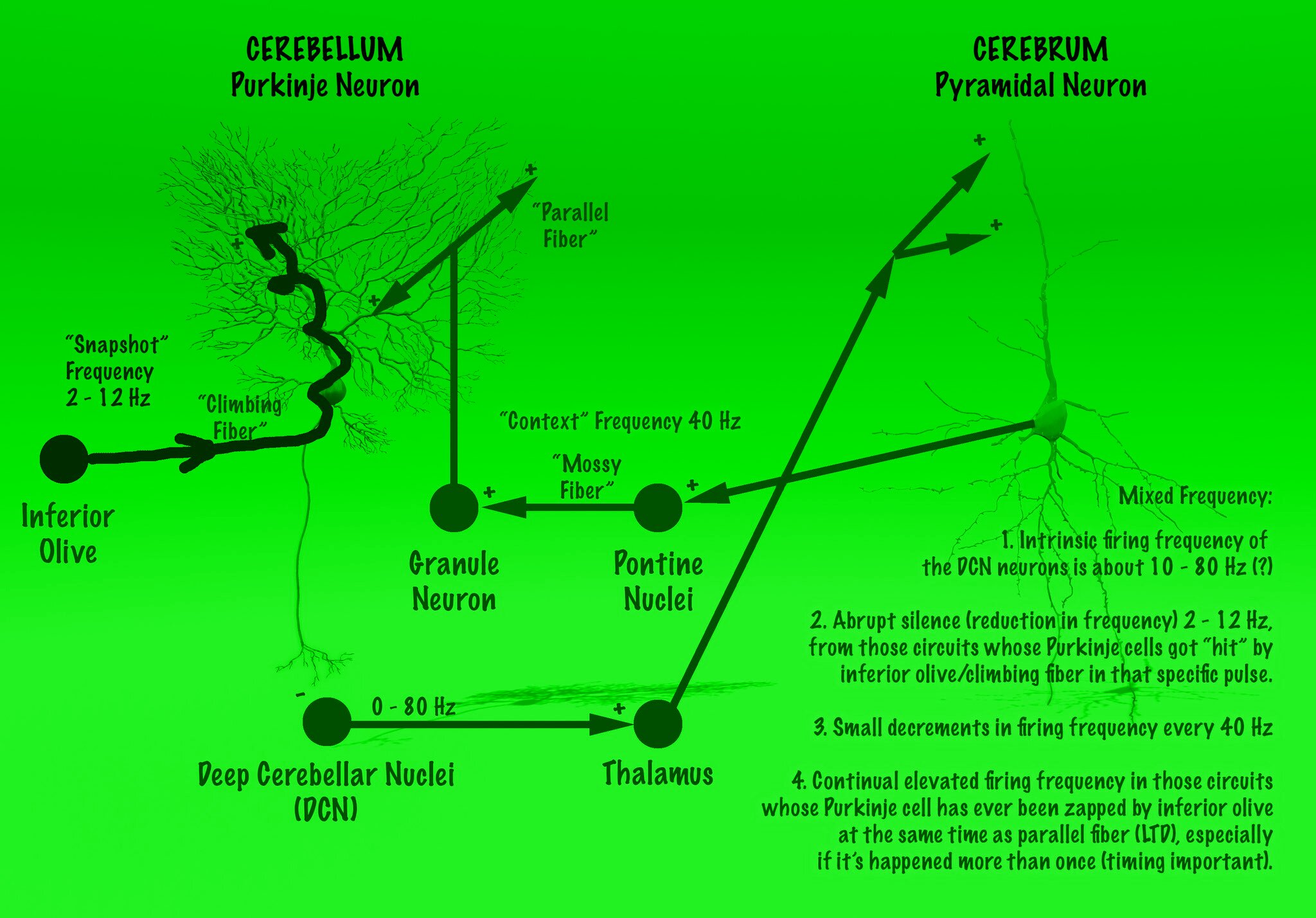
The cerebellum also features a loop originating in the inferior olive—a structure Rodolfo Llinás has long been fascinated with. He proposes that this olivocerebellar system may represent an evolutionary outgrowth of the original "go" signal generator found in flagellar movement—a primitive, rhythmic timing mechanism that became repurposed for coordinating complex motor sequences.
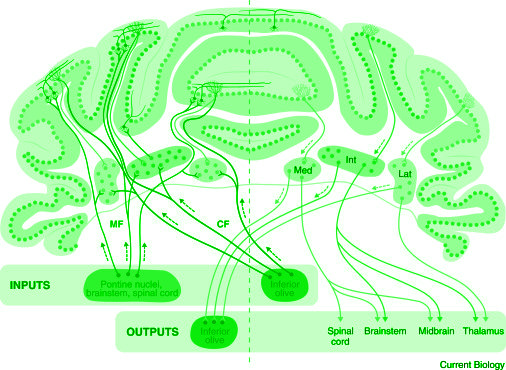
Central pattern generators (CPGs) are roughly a pair of neurons that cylically excite each other, and thereby take turns sending alternating signals to a flagella to drive movement. Work by Mark Churchland on principle component analysis (PCA) looks eerily similar—weighted populations of neurons contribute to two or more component axes, passing max frequency around like a hot potato, to hold phase addresses to specific components of muscle commands. This enables the overall command (like "walk") to be performed with variable speed, in real-time. This also looks similar to phenomenology, where the 0º phase of revolvic refresh of worldsim often coincides with the 0º phase of the walk cycle (perhaps at left elbow). Below is an illustration of radar refresh of the worldsim.
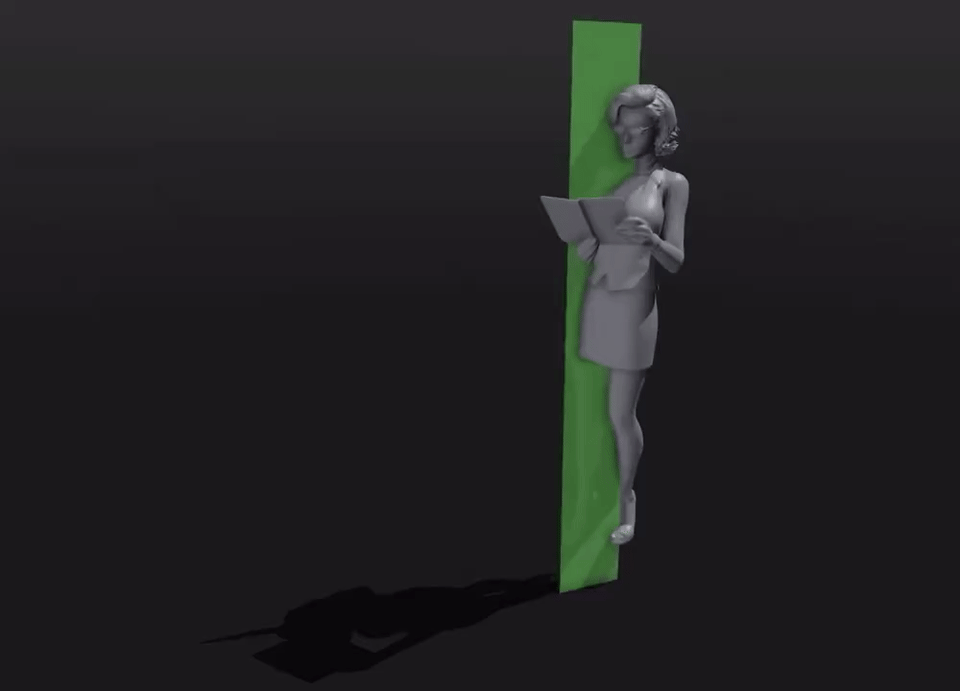
Mark Churchland PCA rings in motor cortex of monkeys are displayed below. More can be read on PCA rings here. They do in fact find that the tracer following these rings slows or speeds with the variation in speed of motor command (and also that it moves upward/downward to a slightly segregated trajectory). This variation in tracer speed is exactly in accord with how the tracer following rings making consciousness behaves. But, when the motor activity stops, the rings die (not true in phenomenology), suggesting other brain regions take up the slack (mu waves?), or that another mechanism is behind the render of consciousness. For simplicity’s sake, imagine the ring occurring in a 2D neural space, where neuron 1 and neuron 2 show sinusoidal firing rate patterns that are 90° out of phase—one peaks while the other is at baseline. This phase-offset pattern is known as being in quadrature. Over the course of a second, each neuron's firing rate modulates sinusoidally between 10 Hz and 80 Hz, tracing out a smooth loop when plotted as principal components (PC1 vs. PC2)—and that’s what creates the observed ring in PCA space.
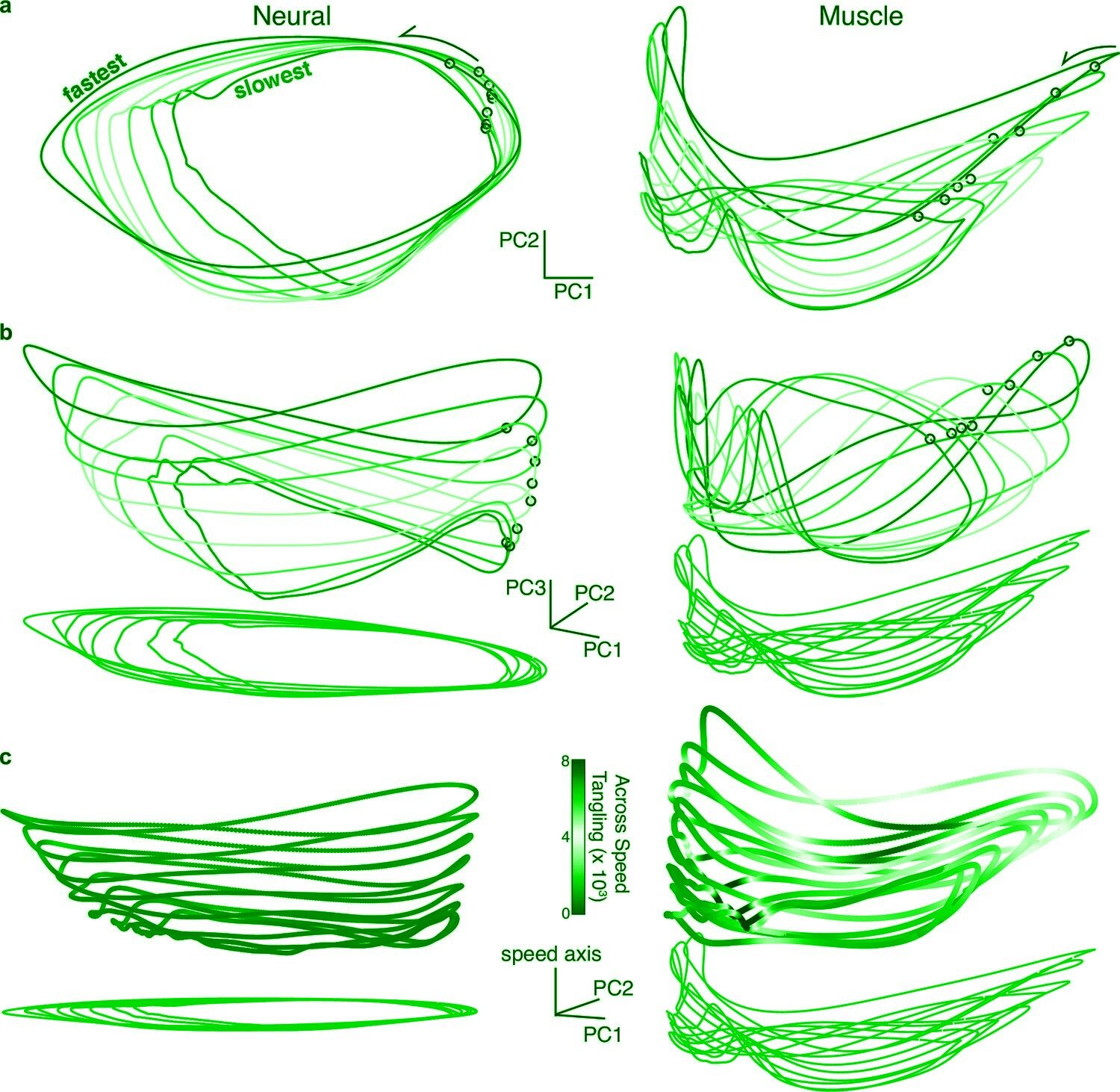
3. Inputs, Priors and Posteriors (Jeff Hawkins/Shamil Chandaria/Karl Friston)?
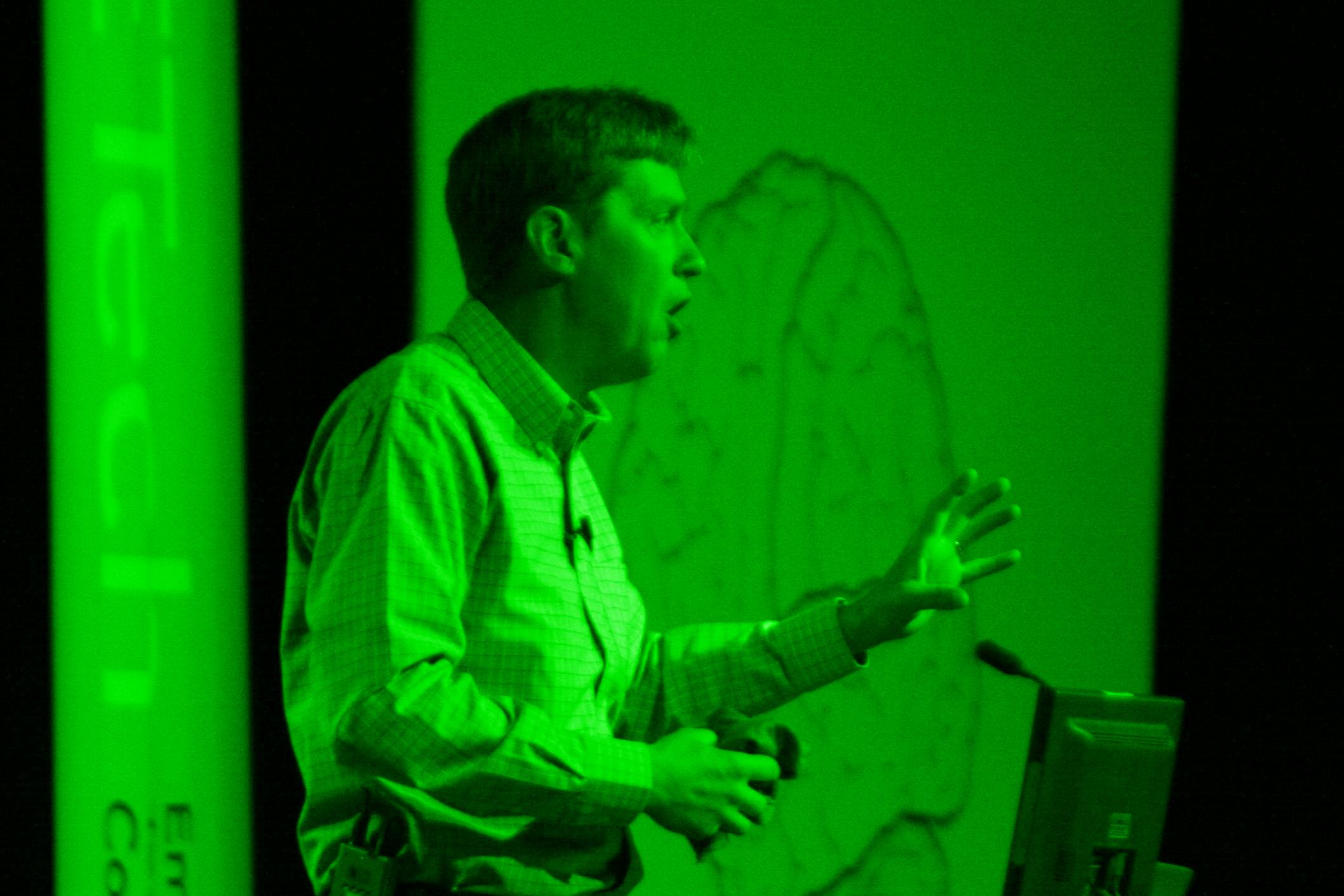 Many view the brain as Bayesian (predictive/probabilistic). Hawkins argues more for a sparse encoding model, which resembles higher nodes in McCulloch's neural net theory.
His two books, "On Intelligence," and "Thousand Brains Theory," are excellent reads. Chandaria extends Friston's ideas and proposes that sensory inputs are compared against priors and context
before concluding with an interpretive posterior (your actual experience), depicted below (taken from his YouTube presentation).
Many view the brain as Bayesian (predictive/probabilistic). Hawkins argues more for a sparse encoding model, which resembles higher nodes in McCulloch's neural net theory.
His two books, "On Intelligence," and "Thousand Brains Theory," are excellent reads. Chandaria extends Friston's ideas and proposes that sensory inputs are compared against priors and context
before concluding with an interpretive posterior (your actual experience), depicted below (taken from his YouTube presentation).
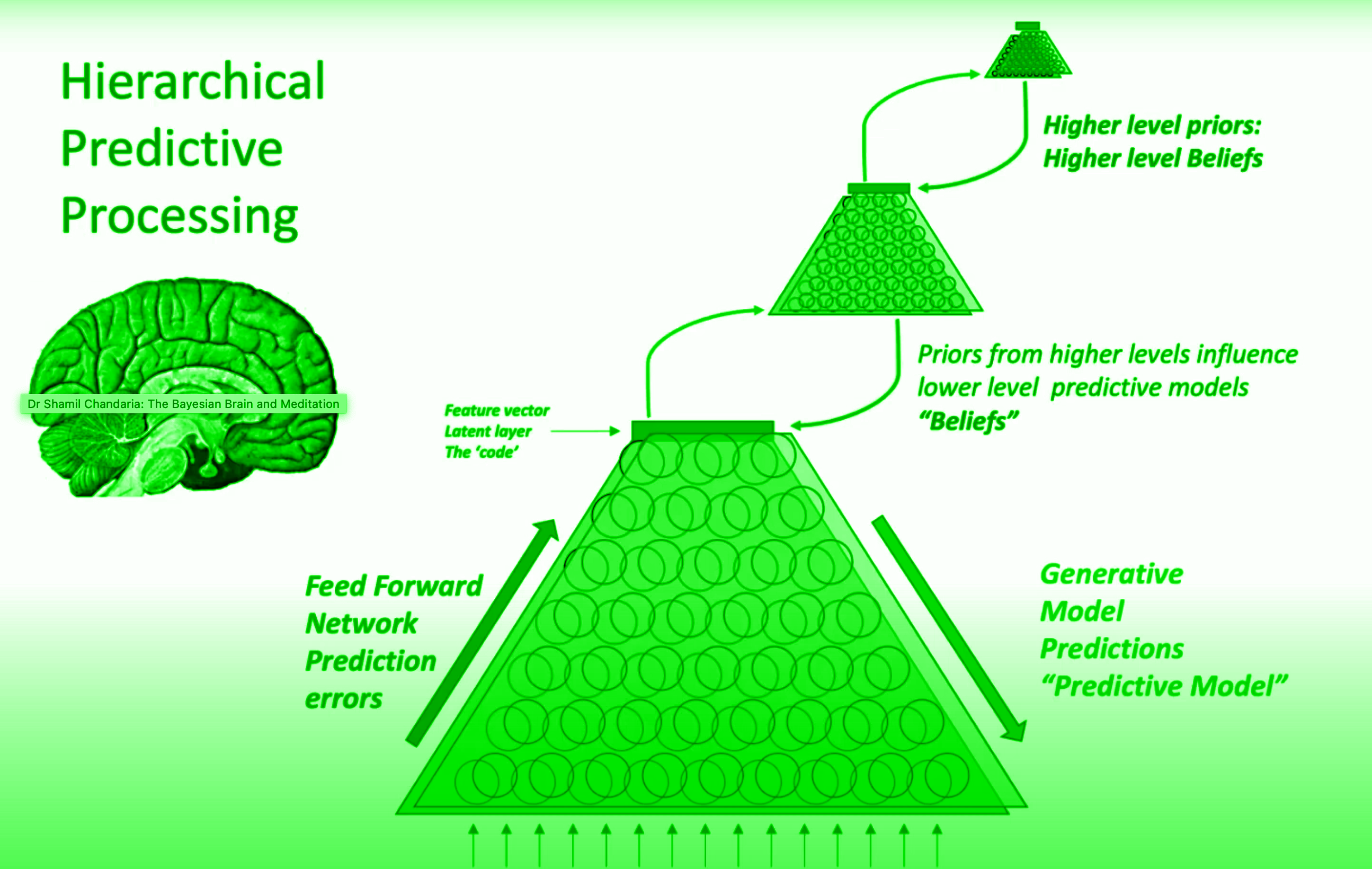
This is good as far as it goes, but I feel it does not look enough at phenomenology, because the worldsim is often refreshed by a revolvic sweep (like a vertical rolodex with 10 cards, all equidistant, and printed one every 100 ms, sweeping around the entire deck or volume in 1 second). This refresh is very dynamic (may vary in revolution speed from 1 second to 25 milliseconds, may vary from 10-20 cards, may vary in 3D orientation [isn't always vertical], etc.). The image below is illustrative, taken from Abraham and Shaw's "Dynamics: The Geometry of Behavior," an excellent 4-volume set.

4. Spatial Cyclism?
My contribution to this discussion is mostly to propose that consciousness is exquisitely orchestrated. That is uses a 'bank' structure (3D agglomerate of concentric cubes/spheres/cylinders) as the binder. In normal state, the brain is fairly loosely bound, and several regions use the bank 'locally.' For example, if you use kasina strobe glasses set to 13 Hz in normal state (eyes closed), you will likely begin to hallucinate a revolvic print of parallel zigzag lines, which may use alternating colors of purple, green, and white; or purple, orange, light blue, and green (or something else). These colors may sometimes be parallel with the lines, or perpendicular to them. I think it is likely that this is the bank schema printhead's behavior being 'lightly seen' in normal state. That is, you do not feel the zigzags, but you do at least see them.
In sedation (or sleep deprivation), the brain becomes hyperpolarized, setting up a global burst mode. It becomes harder for inputs to get through, but if they are strong enough and/or timed with the crests of the system, they gain global broadcast. It is a state of heightened, but time-division access, attention. In this state, the entire higher order/associational brain must use a singular instance of the bank. Now, if you entrain with kasina strobe glasses, you may feel the rotation of the bank printing the zigzags. You observe a singular 'mic' of transients which encode one qualia at a time. You observe the worldsim may be refreshed by standing cards or by a revolvic sweep of cards. This shows that consciousness is highly orchestrated, and certain 'apple slices' of your modeling space get cyclic time-division access to being printed, perhaps somewhat holographically, in the sense that you can deduce the full 3D 'paint' video intended merely from the slice touch points.
What seems most likely to me is that the conscious part of brain is the use of frequency modulation crests (just as is done to encode strength of incoming or outgoing signals) passed amongst a few groups of neurons. Passing the highest frequency crest around, as a kind of stadium wave between intermingled teams, is actually passing the 'bank' around the brain's modeling space. Each phase in this hot-potato game is a slice of worldsim. Each pronounced phase is pretending there is this bank and that it is at a given location/scale/orientation in modeling space. The neurons pull off the rally around a more complex thing (consciousness) via intelligent orchestration over a second of duration.
